New Possibilities of Substance Identification Based on THz Time Domain Spectroscopy Using a Cascade Mechanism of High Energy Level Excitation
Abstract
:1. Introduction
2. Physical Experiment with Thin Paper Layers
3. The SDA Method Efficiency for the Detection of a Substance Covered by Disordered Structure
3.1. SDA Method and Integral Correlation Criteria
3.2. Two Energy-Level Medium
3.2.1. Transmitted Pulses
3.2.2. Reflected Signals
3.3. Three Energy-Level Medium
3.3.1. Signals Transmitted through the Medium
3.3.2. Reflected Signals
4. Conclusions
Acknowledgments
Author Contributions
Conflicts of Interest
Abbreviations
| THz TDS | terahertz time-domain spectroscopy |
| SDA-method | Spectral Dynamics Analysis method |
| ICC | integral correlation criteria |
| FDR | frequency detection range |
References
- Dobroiu, A.; Sasaki, Y.; Shibuya, T.; Otani, C.; Kawase, K. THz-wave spectroscopy applied to the detection of illicit drugs in mail. Proc. IEEE 2007, 95, 1566–1575. [Google Scholar] [CrossRef]
- Chen, J.; Chen, Y.; Zhao, H.; Bastiaans, G.J.; Zhang, X.-C. Absorption coefficients of selected explosives and related compounds in the range of 0.1–2.8 THz. Opt. Express 2007, 15, 12060. [Google Scholar] [CrossRef] [PubMed]
- Leahy-Hoppa, M.R.; Fitch, M.J.; Zheng, X.; Hayden, L.M.; Osiander, R. Wideband terahertz spectroscopy of explosives. Chem. Phys. Lett. 2007, 434, 227–230. [Google Scholar] [CrossRef]
- Choi, K.; Hong, T.; Sim, K.I.; Ha, T.; Park, B.C.; Chung, J.H.; Cho, S.G.; Kim, J.H. Reflection terahertz time-domain spectroscopy of RDX and HMX explosives. Appl. Phys. 2014, 115, 023105. [Google Scholar] [CrossRef]
- Beigang, R.; Biedron, S.G.; Dyjak, S.; Ellrich, F.; Magnus, W.; Haakestad, M.W.; Ospald, F. Comparison of terahertz technologies for detection and identification of explosives. Proc. SPIE 2014, 9102, 91020C. [Google Scholar]
- Ergün, S.; Sönmez, S. Terahertz technology for military applications. J. Mil Inf. Sci. 2015, 3, 13–16. [Google Scholar] [CrossRef]
- Demirağ, Y.; Bütün, B.; Özbay, E. Plasmonic enhanced terahertz time-domain spectroscopy system for identification of common explosives. Proc. SPIE 2017, 10210, 1021012. [Google Scholar]
- Kawase, K.; Shibuya, T.; Hayashi, S.I.; Suizu, K. THz imaging techniques for nondestructive inspections. C. R. Phys. 2010, 11, 510–518. [Google Scholar] [CrossRef]
- Ahi, K.; Anwar, M. Advanced terahertz techniques for quality control and counterfeit detection. Proc. SPIE 2016, 9856, 98560G. [Google Scholar]
- Amenabar, I.; Lopez, F.; Mendikute, A. In introductory review to THz non-destructive testing of composite mater. J. Infrared Millim. Terahertz Waves 2013, 34, 152–169. [Google Scholar] [CrossRef]
- Palka, N.; Krimi, S.; Ospald, F.; Miedzinska, D.; Gieleta, R.; Malek, M.; Beigang, R. Precise determination of thicknesses of multilayer polyethylene composite materials by terahertz time-domain spectroscopy. J. Infrared Millim. Terahertz Waves 2015, 36, 578–596. [Google Scholar] [CrossRef]
- Liu, S.; Chen, H.; Cui, T.J. A broadband terahertz absorber using multi-layer stacked bars. Appl. Phys. Lett. 2015, 106, 151601. [Google Scholar] [CrossRef]
- Redo-Sanchez, A.; Heshmat, B.; Aghasi, A.; Naqvi, S.; Zhang, M.; Romberg, J.; Raskar, R. Terahertz time-gated spectral imaging for content extraction through layered structures. Nat. Commun. 2016, 7, 12665. [Google Scholar] [CrossRef] [PubMed]
- Dai, B.; Wang, P.; Wang, T.Y.; You, C.W.; Yang, Z.G.; Wang, K.J.; Liu, J.S. Improved terahertz nondestructive detection of debonds locating in layered structures based on wavelet transform. Compos. Struct. 2017, 168, 562–568. [Google Scholar] [CrossRef]
- Ahn, K.J.; Rotermund, F. Terahertz optical bistability of graphene in thin layers of dielectrics. Opt. Express 2017, 25, 8484–8490. [Google Scholar] [CrossRef] [PubMed]
- Gowen, A.A.; O’Sullivan, C.; O’Donnell, C.P. Terahertz time domain spectroscopy and imaging: Emerging techniques for food process monitoring and quality control. Trends Food Sci. Technol. 2012, 25, 40–46. [Google Scholar] [CrossRef]
- Qin, J.; Ying, Y.; Xie, L. The detection of agricultural products and food using terahertz spectroscopy: A review. Appl. Spectrosc. Rev. 2013, 48, 439–457. [Google Scholar] [CrossRef]
- Ok, G.; Kim, H.J.; Chun, H.S.; Choi, S.W. Foreign-body detection in dry food using continuous sub-terahertz wave imaging. Food Control 2014, 42, 284–289. [Google Scholar] [CrossRef]
- Ok, G.; Park, K.; Kim, H.J.; Chun, H.S.; Choi, S.W. High-speed terahertz imaging toward food quality inspection. Appl. Opt. 2014, 53, 1406–1412. [Google Scholar] [CrossRef] [PubMed]
- Ajito, K.; Kim, J.Y.; Ueno, Y.; Song, H.J.; Ueda, K.; Limwikrant, W.; Moribe, K. Nondestructive multicomponent terahertz chemical imaging of medicine in tablets. J. Electrochem. Soc. 2014, 161, B171–B175. [Google Scholar] [CrossRef]
- Yang, X.; Zhao, X.; Yang, K.; Liu, Y.; Liu, Y.; Fu, W.; Luo, Y. Biomedical Applications of Terahertz Spectroscopy and Imaging. Trends Biotechnol. 2016, 34, 810–824. [Google Scholar] [CrossRef] [PubMed]
- Kemp, M.C. Explosives detection by terahertz spectroscopy—A bridge too far? IEEE Trans. Terahertz Sci. Technol. 2011, 1, 282–292. [Google Scholar] [CrossRef]
- Palka, N. Identification of concealed materials, including explosives, by terahertz reflection spectroscopy. Opt. Eng. 2013, 53, 031202. [Google Scholar] [CrossRef]
- Kaushik, M.; Ng, B.W.H.; Fischer, B.M.; Abbott, D. Reduction of scattering effects in THz-TDS signals. IEEE Photonics Technol. Lett. 2012, 24, 155–157. [Google Scholar] [CrossRef]
- Choi, J.; Ryu, S.Y.; Kwon, W.S.; Kim, K.S.; Kim, S. Compound explosives detection and component analysis via terahertz time-domain spectroscopy. J. Opt. Soc. Korea 2013, 17, 454–460. [Google Scholar] [CrossRef]
- Puc, U.; Abina, A.; Rutar, M.; Zidanšek, A.; Jeglič, A.; Valušis, G. Terahertz spectroscopic identification of explosive and drug simulants concealed by various hiding techniques. Appl. Opt. 2015, 54, 4495–4502. [Google Scholar] [CrossRef] [PubMed]
- Withayachumnankul, W.; Fischer, B.M.; Abbott, D. Numerical removal of water vapor effects from terahertz time-domain spectroscopy measurements. Proc. R. Soc. A 2008, 464, 2435–2456. [Google Scholar] [CrossRef]
- Yu, H.; Zheng, Z.; Chen, J.; Yijun, X.; Wenai, W.; Ping, S. A numerical method based on transfer function for removing the noise of water vapor from terahertz spectra. Proc. SPIE 2016, 1015713. [Google Scholar] [CrossRef]
- Trofimov, V.A.; Varentsova, S.A. An effective method for substance detection using the broad spectrum THz signal: A “Terahertz nose”. Sensors 2015, 15, 12103–12132. [Google Scholar] [CrossRef] [PubMed]
- Trofimov, V.A.; Varentsova, S.A. Essential limitations of the standard THz TDS method for substance detection and identification and a way of overcoming them. Sensors 2016, 16, 502. [Google Scholar] [CrossRef] [PubMed]
- Trofimov, V.A.; Varentsova, S.A. False detection of dangerous and neutral substances in commonly used materials by means of the standard THz time domain spectroscopy. J. Eur. Opt. Soc. 2016, 11, 16016. [Google Scholar] [CrossRef]
- Trofimov, V.; Zagursky, D.; Zakharova, I. High energy level excitation of molecules due to cascade mechanism of broadband THz pulse energy absorption. In Frontiers in Optics; OSA Technical Digest (Online); Paper JTu4A.9; Optical Society of America: Washington, DC, USA, 2015. [Google Scholar] [CrossRef]
- Trofimov, V.A.; Varentsova, S.A. Detection and identification of drugs under real conditions by using noisy terahertz broadband pulse. Appl. Opt. 2016, 55, 9605–9618. [Google Scholar] [CrossRef] [PubMed]
- Trofimov, V.A.; Varentsova, S.A.; Zakharova, I.G.; Zagursky, D.Y. Principal limitation of standard THz time-domain spectroscopy method of the detection and identification of substance and way of its overcoming. Proc. SPIE 2015, 9652, 96520B. [Google Scholar]
- Trofimov, V.A.; Varentsova, S.A.; Tikhomirov, V.V.; Trofimov, V.V. High effective THz-TDS method for the detection and identification of substances in real conditions. Proc. SPIE 2016, 9836, 98362U. [Google Scholar]
- Trofimov, V.A.; Varentsova, S.A.; Trofimov, V.V. Possibility of the detection and identification of substance at long distance at using broad THz pulse. Proc. SPIE 2014, 9253. [Google Scholar] [CrossRef]
- Trofimov, V.A.; Zakharova, I.G.; Zagursky, D.Y.; Varentsova, S.A. Detection and identification of substances using noisy THz signal. Proc. SPIE 2017, 10194, 101942O. [Google Scholar]
- Marskar, R.; Osterberg, U. Multilevel Maxwell-Bloch simulations in inhomogeneously broadened media. Opt. Express 2011, 19, 16784–16796. [Google Scholar] [CrossRef] [PubMed]
- Castin, Y.; Molmer, K. Maxwell-Bloch equations: A unified view of nonlinear optics and nonlinear atom optics. Phys. Rev. A 1995, 51, 3426–3428. [Google Scholar] [CrossRef]
- Astapenko, V. Interaction of Ultrashort Electromagnetic Pulses with Matter; Springer: Heidelberg, Germany, 2013; p. 94. [Google Scholar]
- Zhan, T.; Shi, X.; Dai, Y.; Liu, X.; Zi, J. Transfer matrix method for optics in graphene layers. J. Phys. Condens. Matter 2013, 25, 215301. [Google Scholar] [CrossRef] [PubMed]
- Dietze, D.; Darmo, J.; Unterrainer, K. Efficient population transfer in modulation doped single quantum wells by intense few-cycle terahertz pulses. New J. Phys. 2013, 15, 065014. [Google Scholar] [CrossRef]
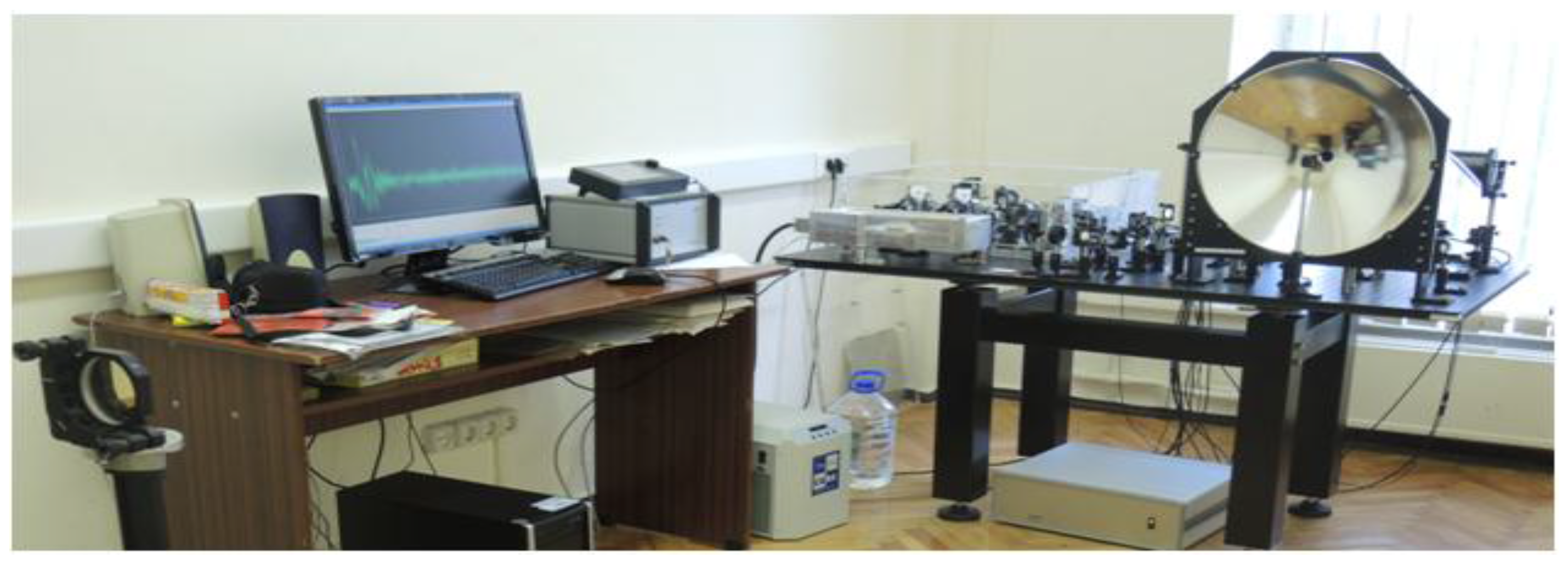

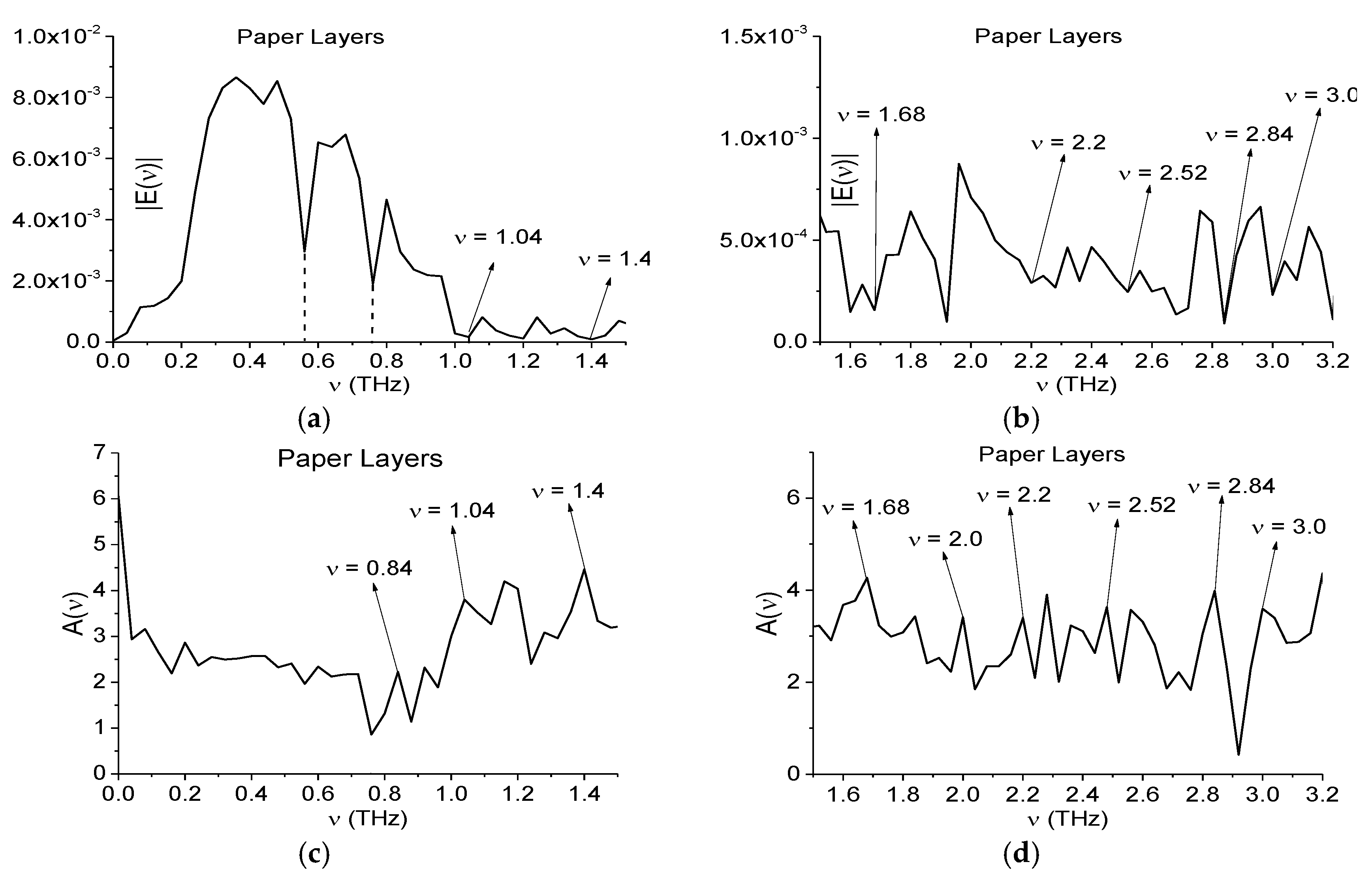
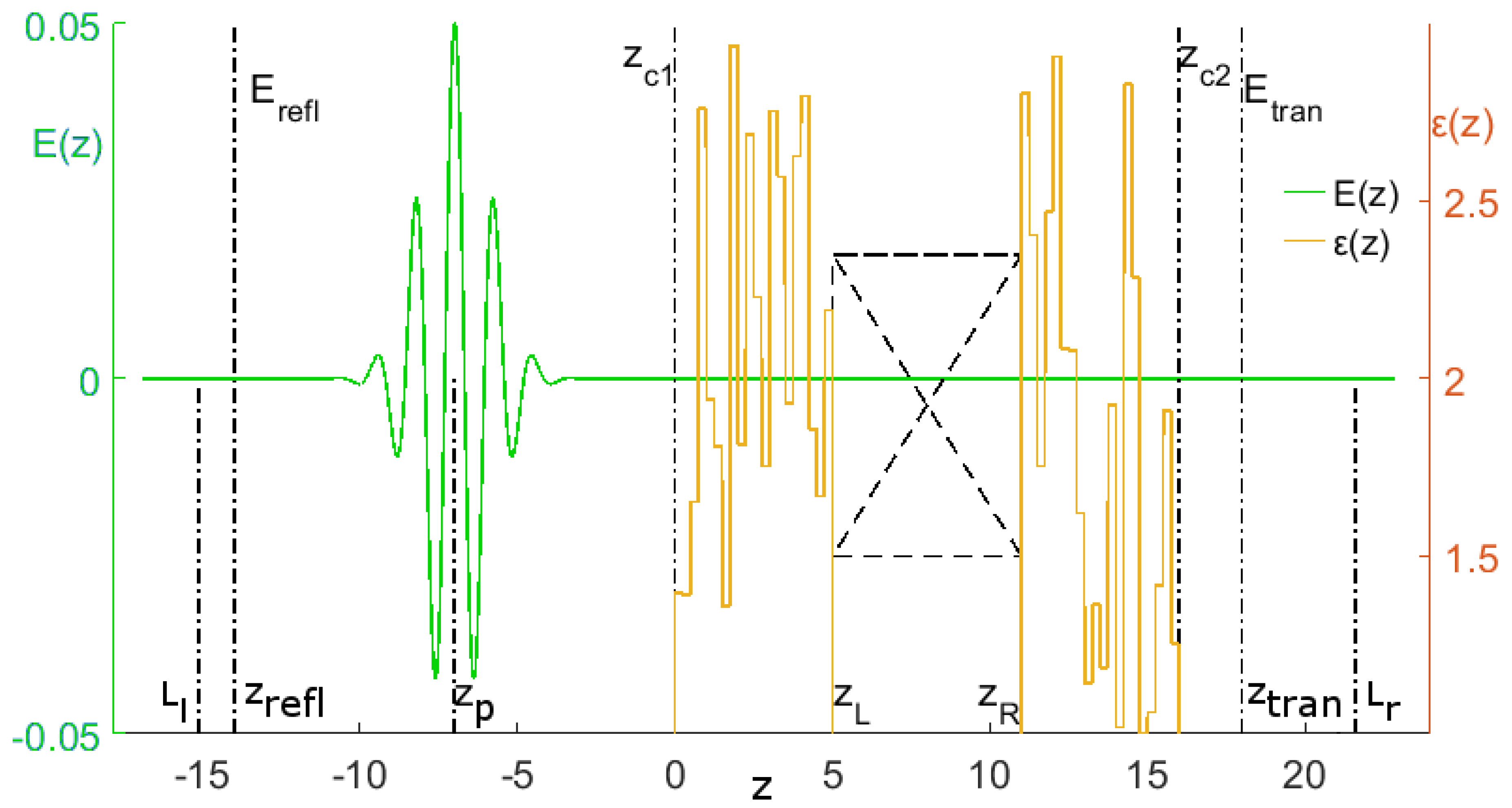
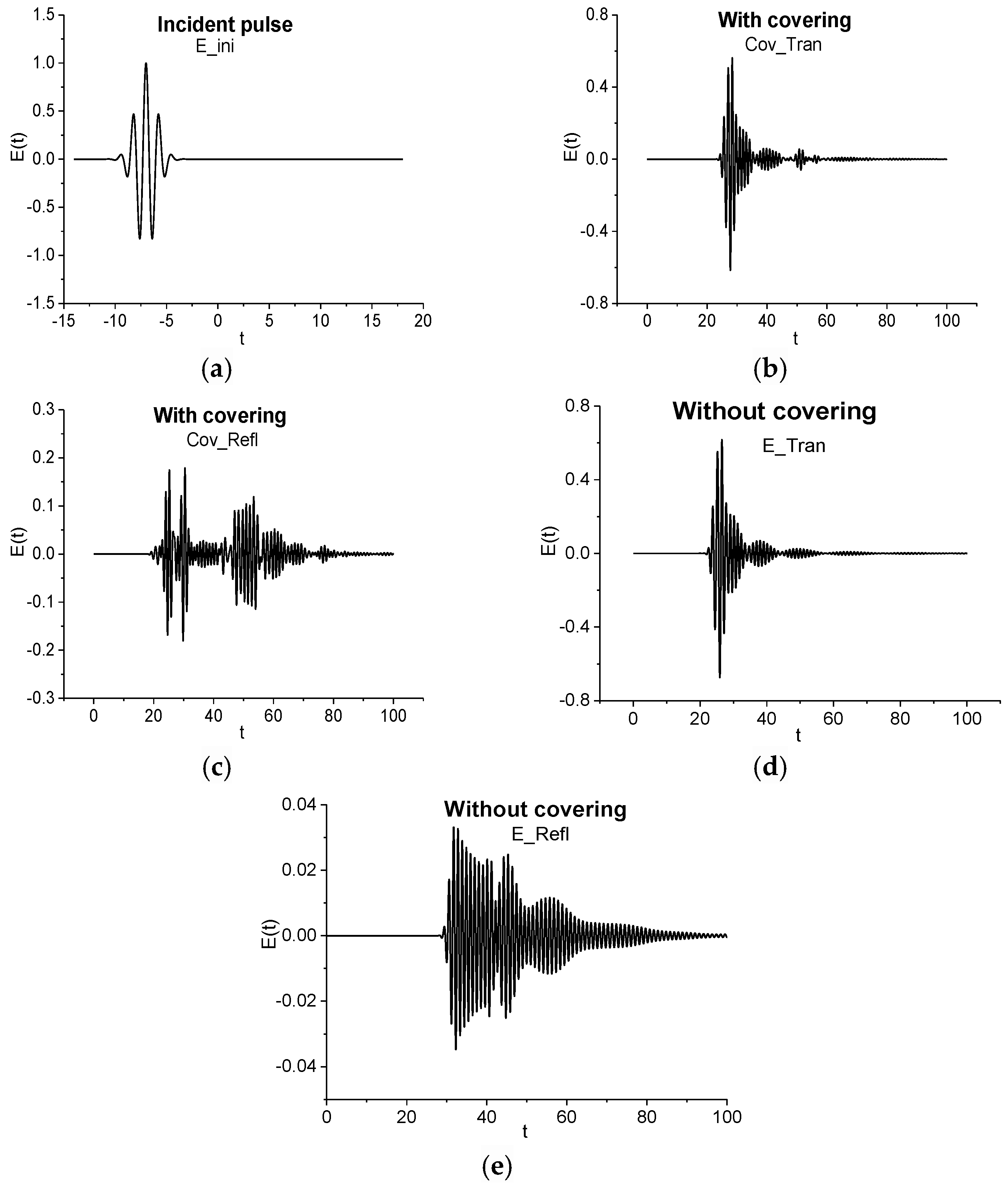

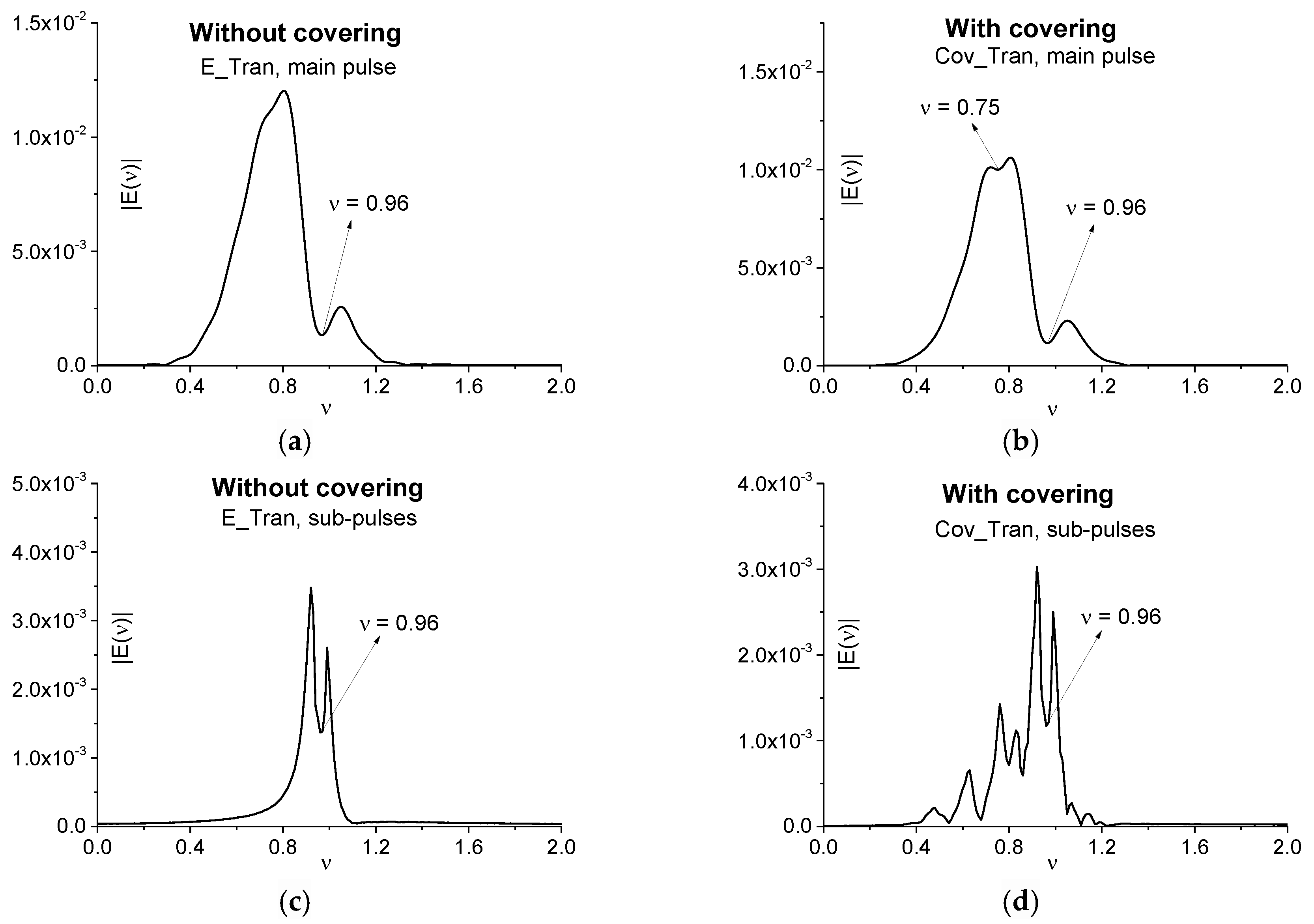

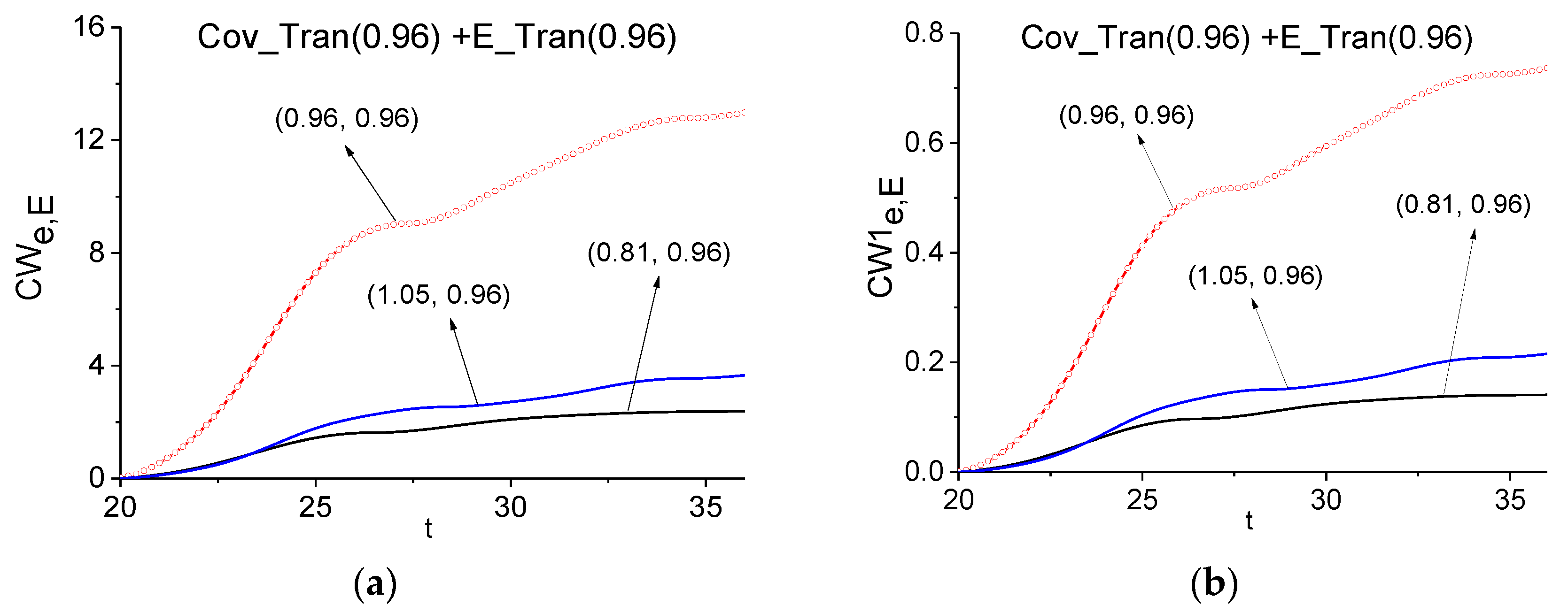
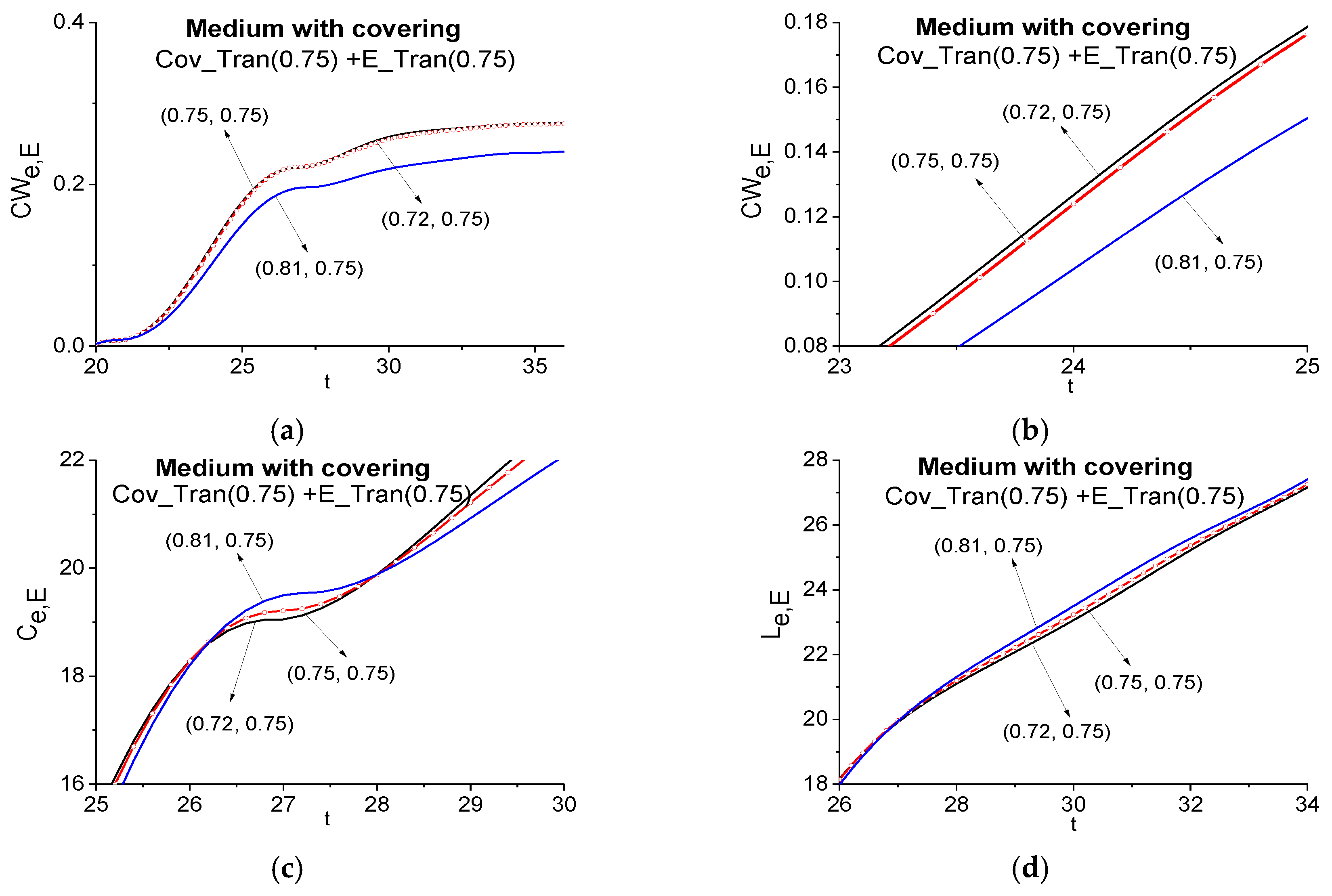
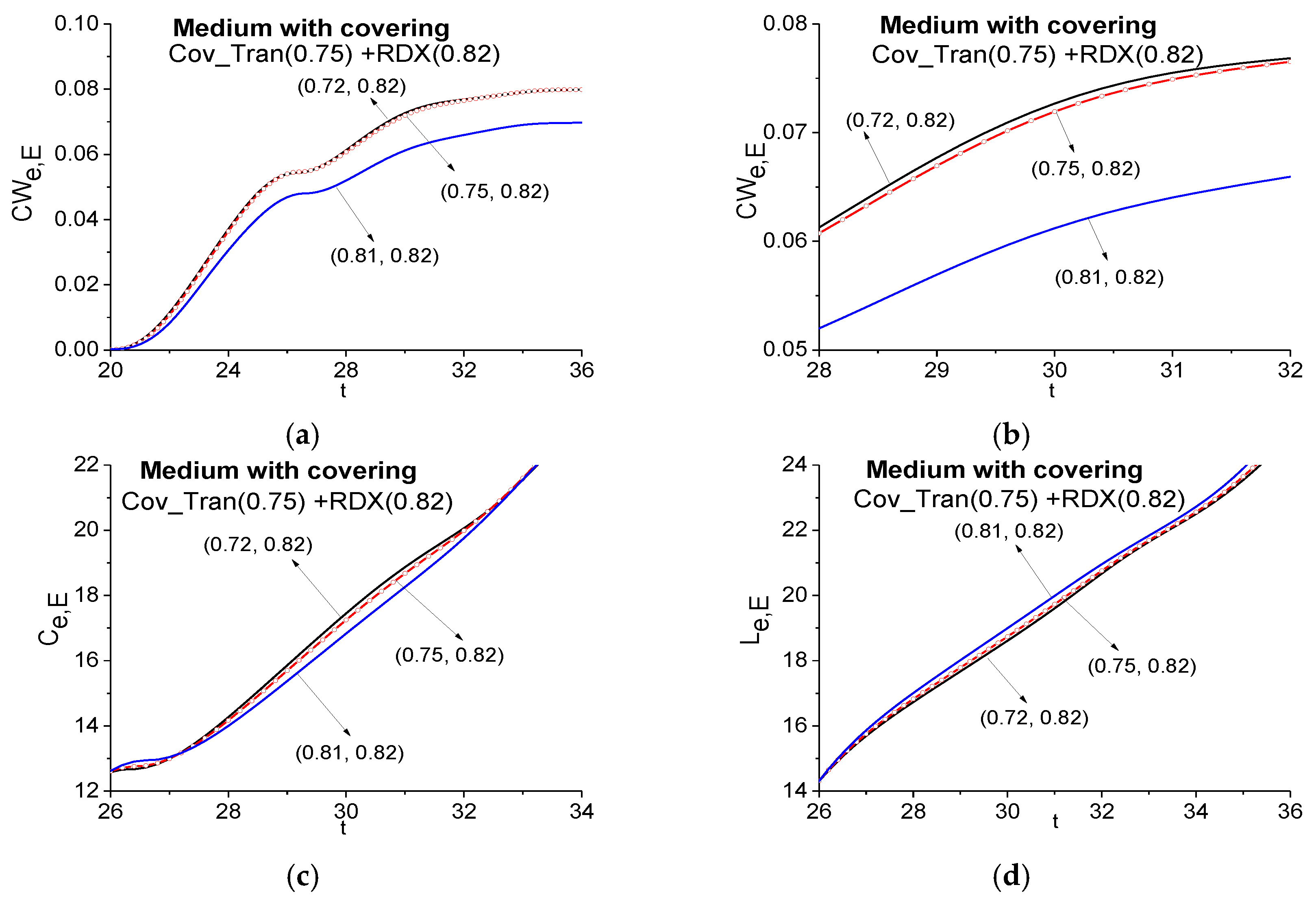



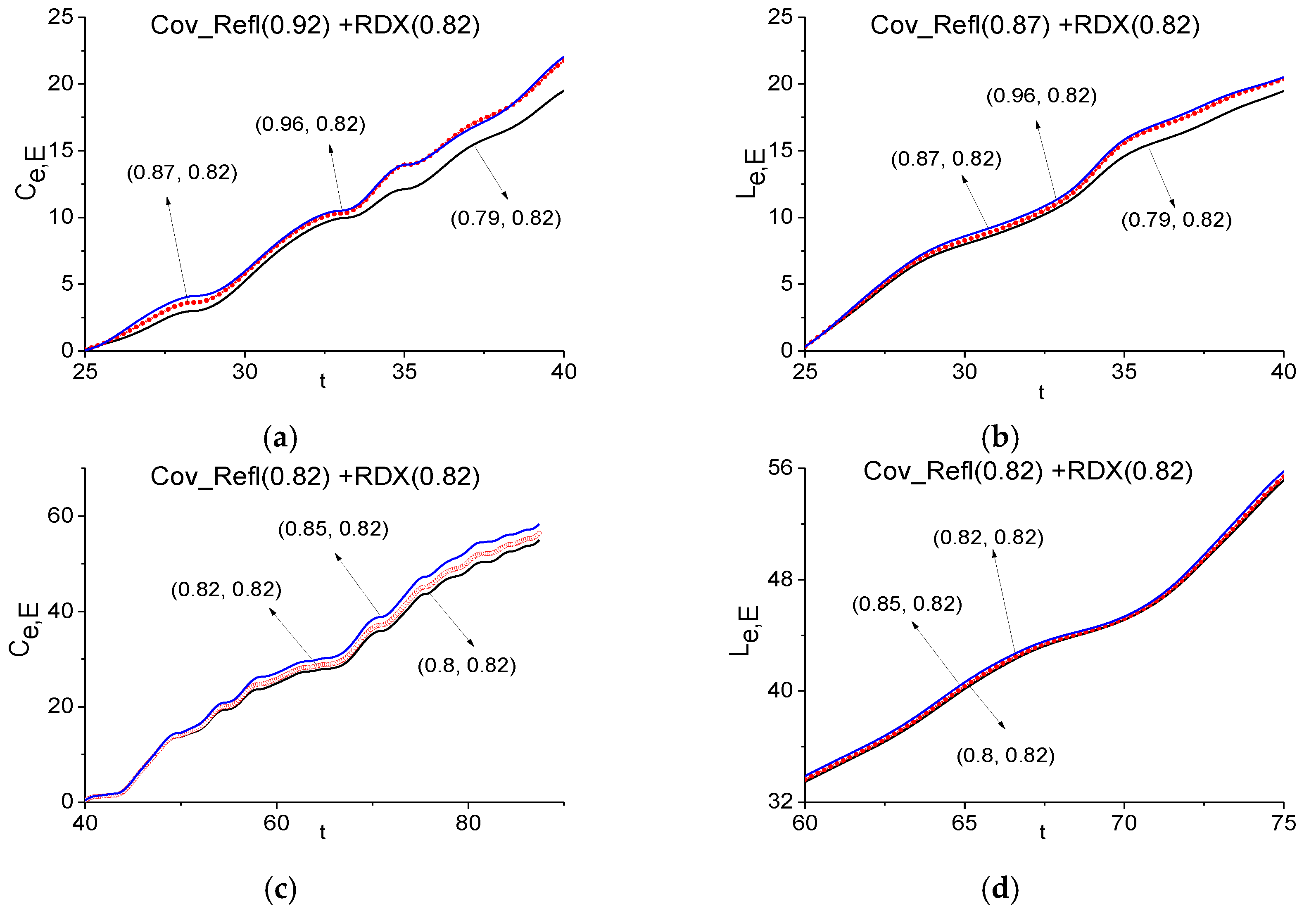

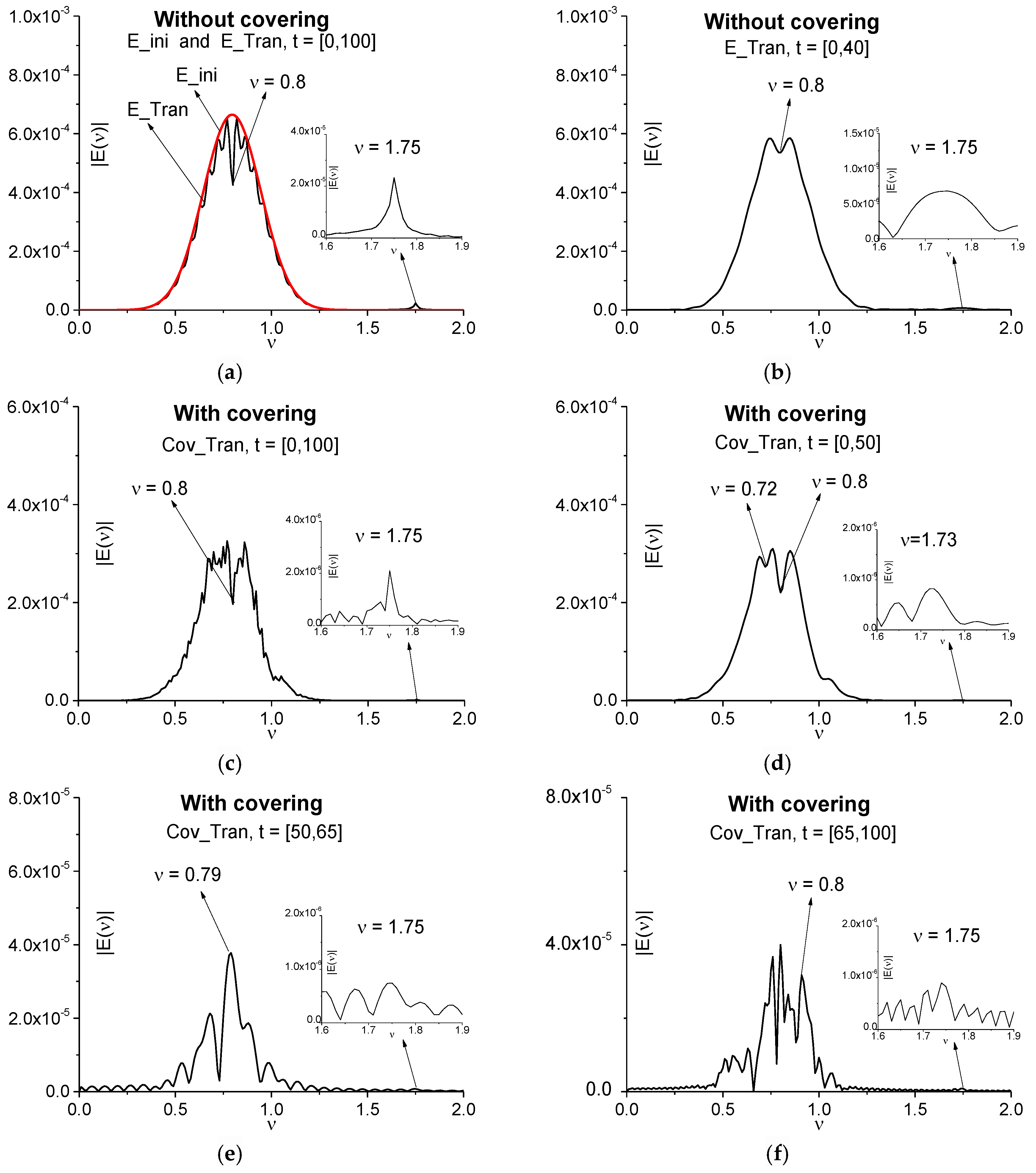
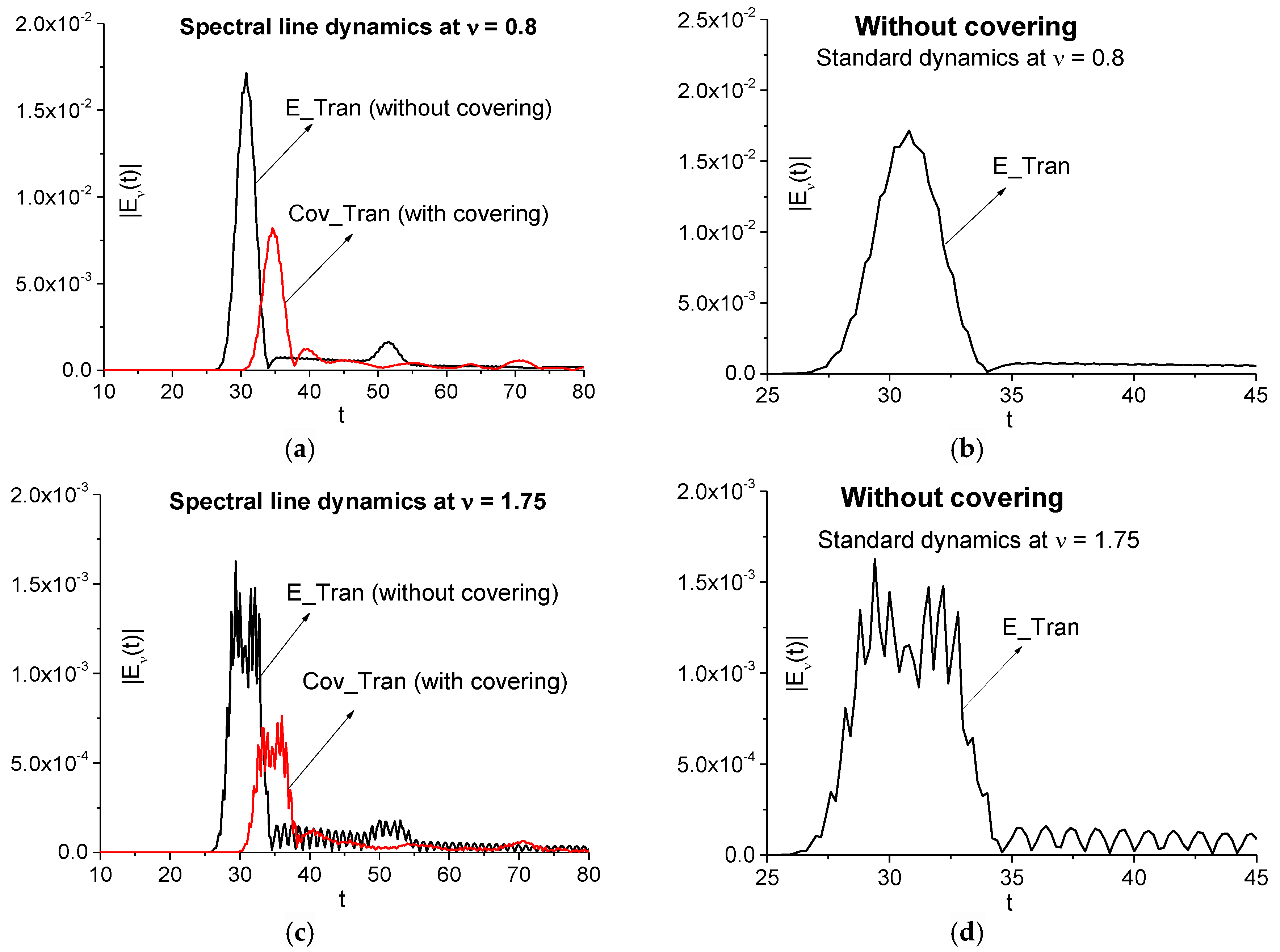
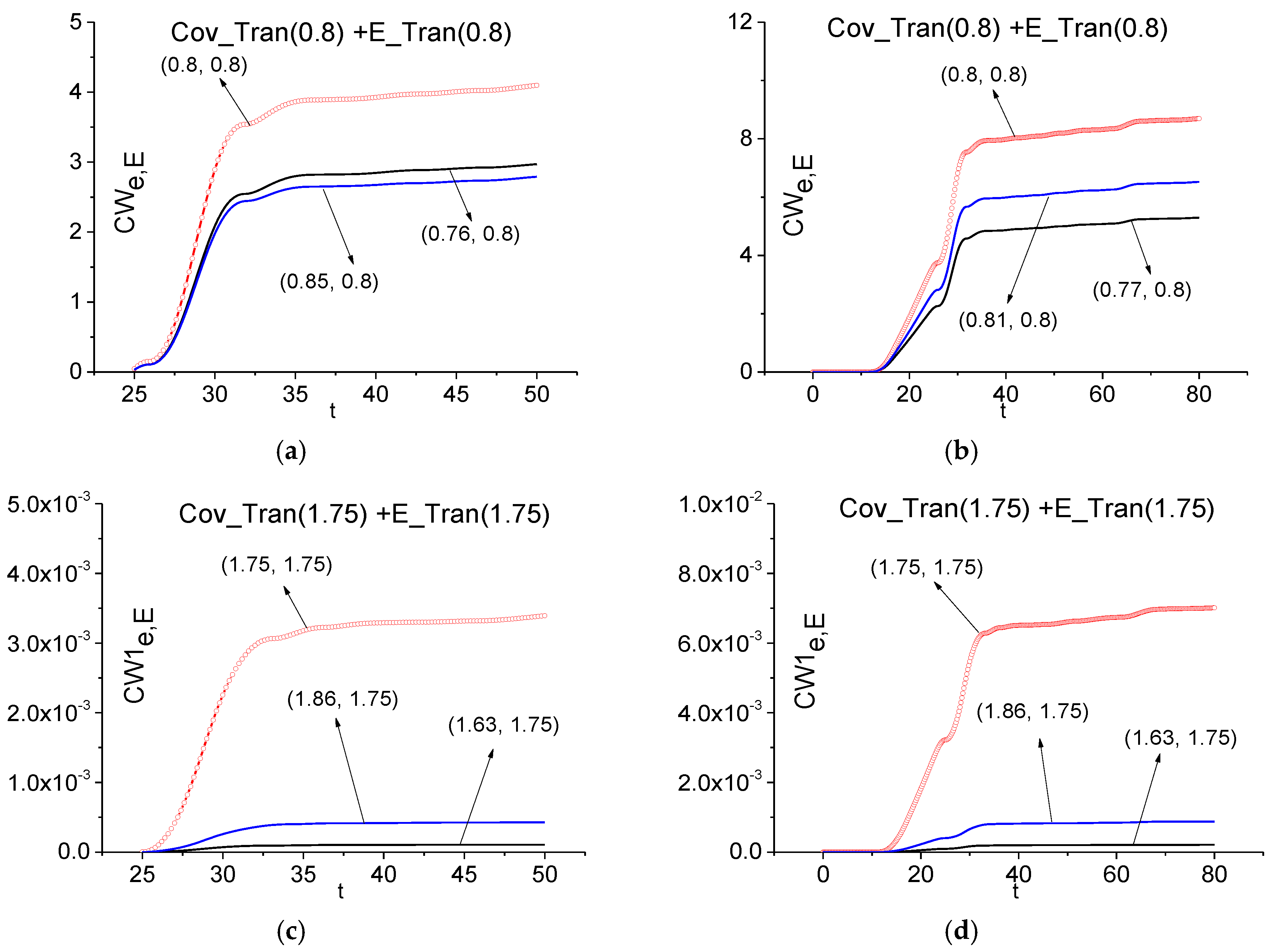
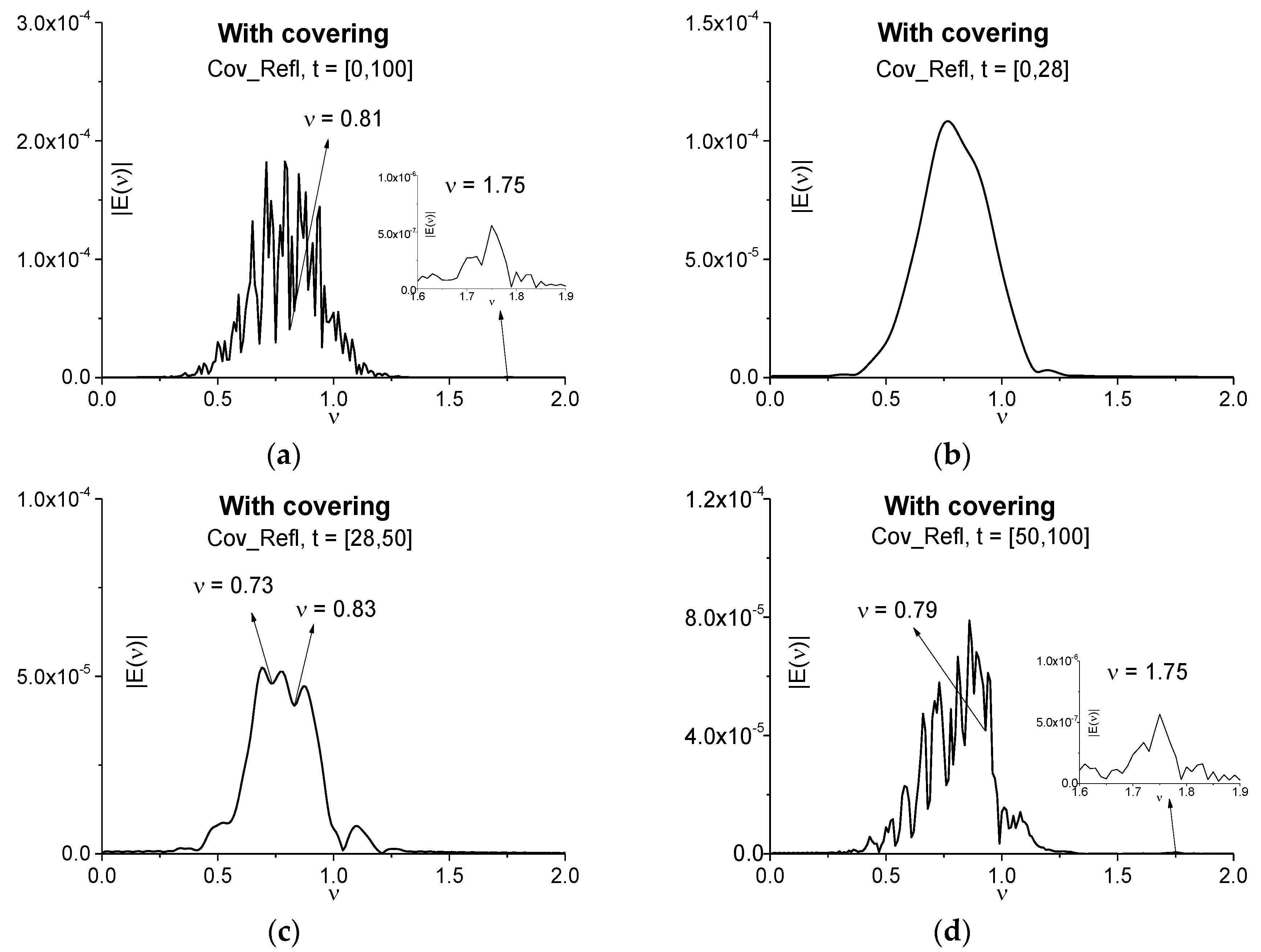

© 2017 by the authors. Licensee MDPI, Basel, Switzerland. This article is an open access article distributed under the terms and conditions of the Creative Commons Attribution (CC BY) license (http://creativecommons.org/licenses/by/4.0/).
Share and Cite
Trofimov, V.A.; Varentsova, S.A.; Zakharova, I.G.; Zagursky, D.Y. New Possibilities of Substance Identification Based on THz Time Domain Spectroscopy Using a Cascade Mechanism of High Energy Level Excitation. Sensors 2017, 17, 2728. https://doi.org/10.3390/s17122728
Trofimov VA, Varentsova SA, Zakharova IG, Zagursky DY. New Possibilities of Substance Identification Based on THz Time Domain Spectroscopy Using a Cascade Mechanism of High Energy Level Excitation. Sensors. 2017; 17(12):2728. https://doi.org/10.3390/s17122728
Chicago/Turabian StyleTrofimov, Vyacheslav A., Svetlana A. Varentsova, Irina G. Zakharova, and Dmitry Yu. Zagursky. 2017. "New Possibilities of Substance Identification Based on THz Time Domain Spectroscopy Using a Cascade Mechanism of High Energy Level Excitation" Sensors 17, no. 12: 2728. https://doi.org/10.3390/s17122728



